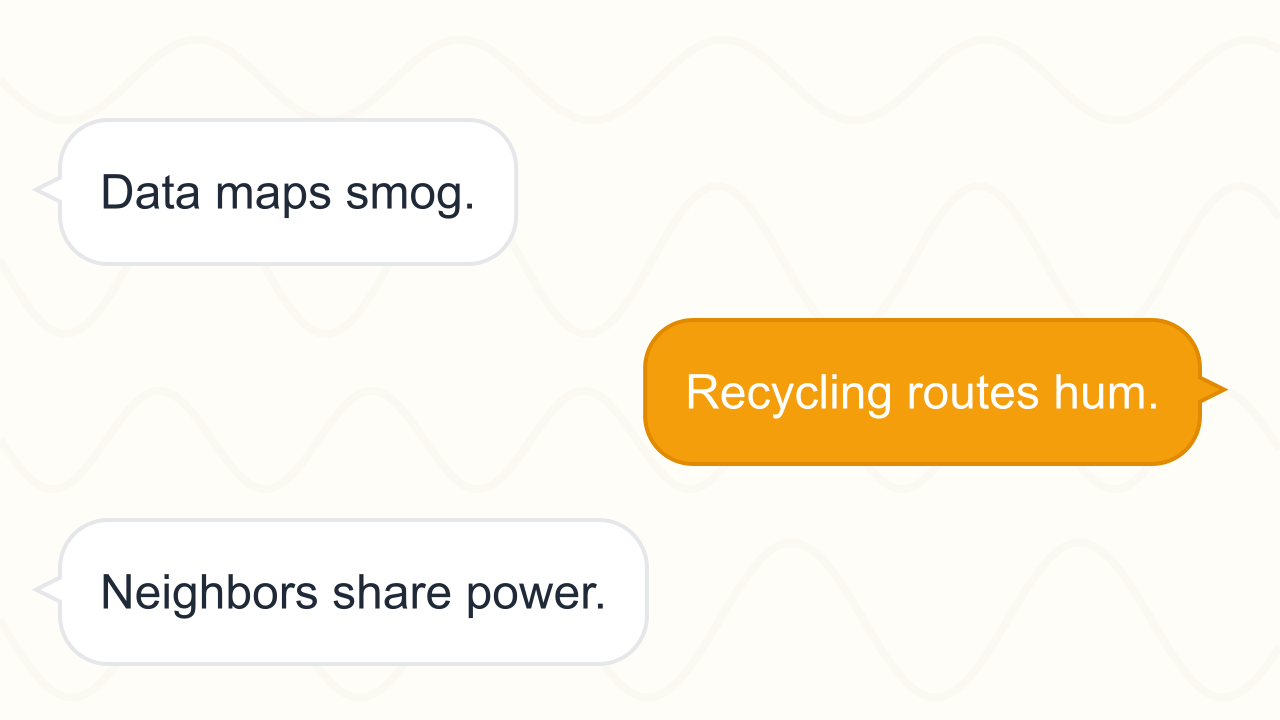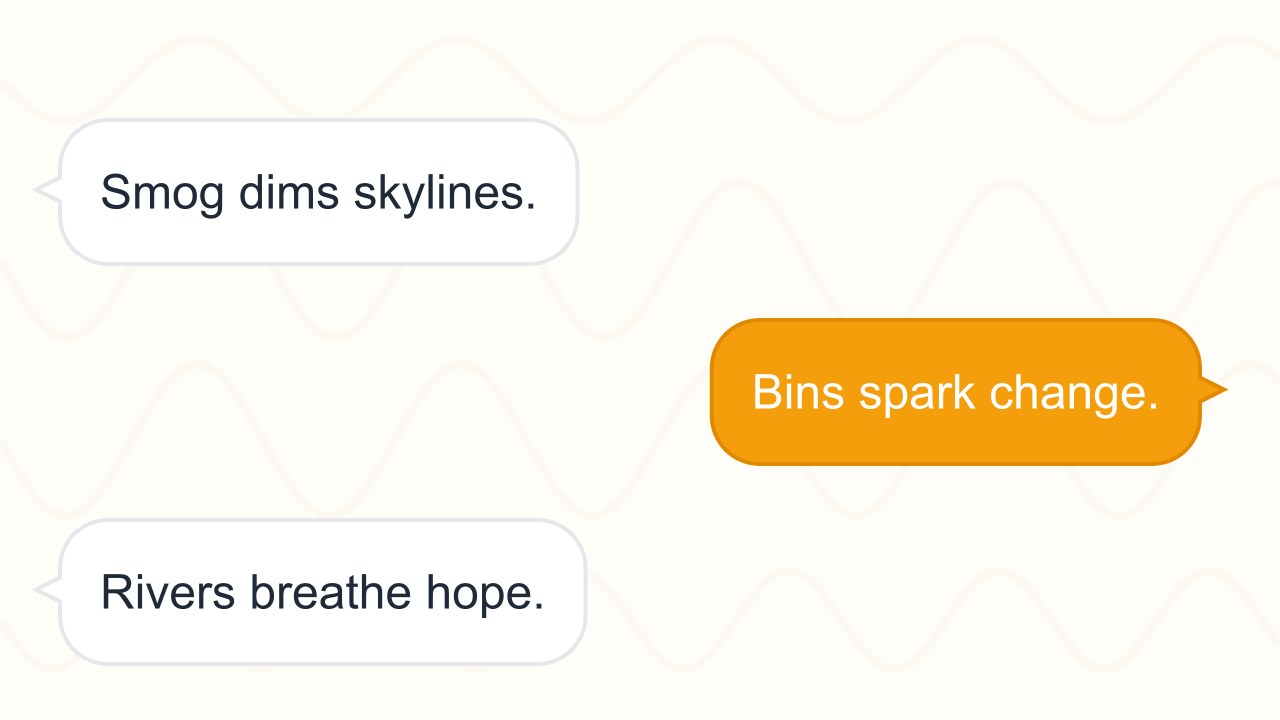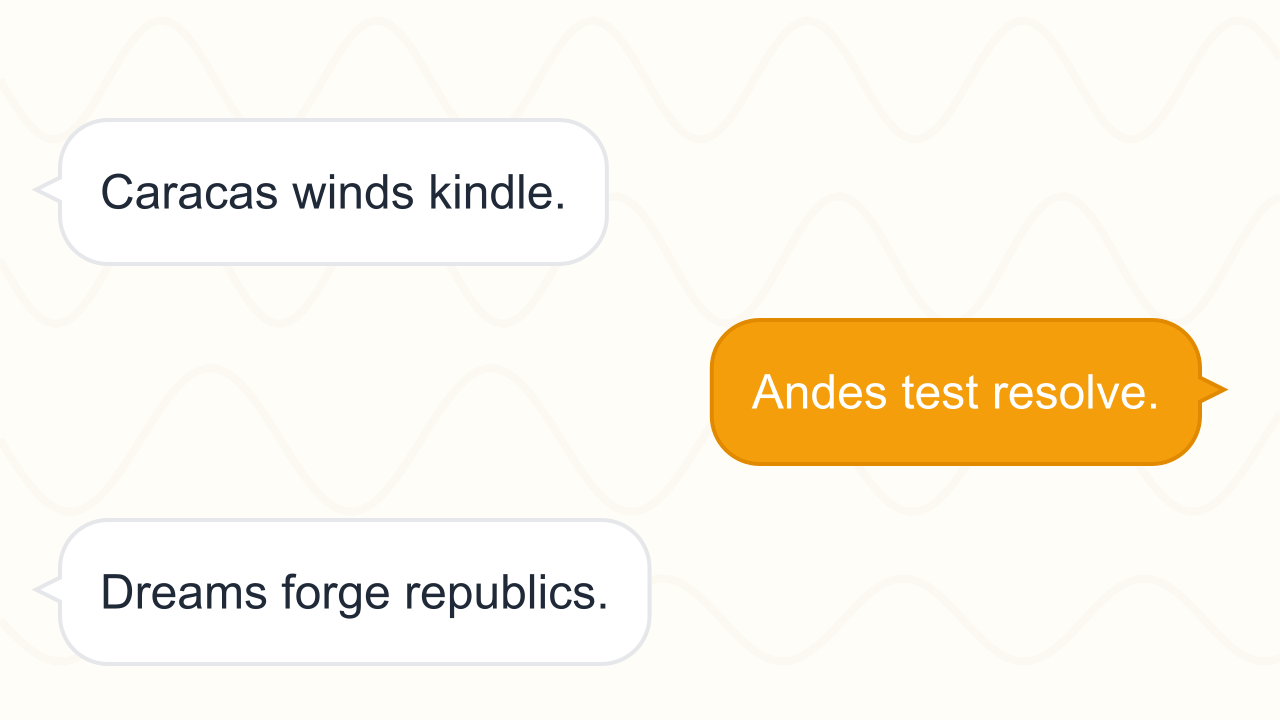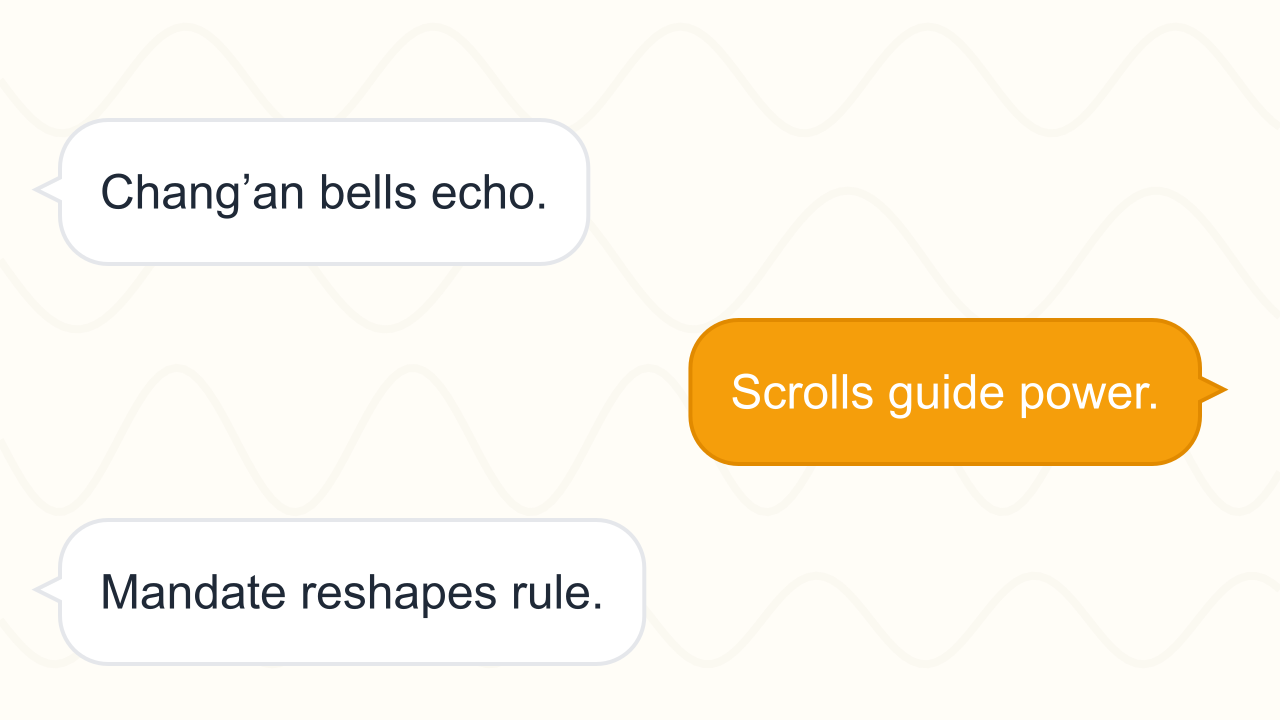Designing Regenerative Networks for Future Neighborhoods reading Exercise
Trace how innovators, residents, and policymakers build interconnected solutions that cut pollution, expand recycling, and redesign everyday systems across six detailed case studies.
Exercise Guide
How to complete:
Read the six passages in order. Each passage spotlights a different community initiative, moving from pollution monitoring to product redesign, resource recovery, and global collaboration. Annotate key data, vocabulary, and stakeholders in each passage. After reading, answer the questions—expect a mix of factual checks, inference, synonym/antonym identification, and word-meaning analysis.
Success tips:
These passages weave science, civic planning, and cultural perspectives. Watch for transitions that reveal how one solution influences another.
- Chart the cause-and-effect chain that links pollution sources to the recycling or prevention strategies adopted.
- Underline vocabulary clues that signal synonyms or antonyms used in the questions.
- Compare short-term pilot programs with structural investments in equity and technology.
- Track how data collection empowers communities to negotiate with industry and government.
- Summarize each passage in one sentence to connect local action with regional or international goals.
Knowledge:
This module deepens understanding of environmental diagnostics, circular design, bioscience innovations, cultural stewardship, economic incentives, and international benchmarking. You will practice evaluating evidence, interpreting context clues for vocabulary, and judging the effectiveness of multifaceted environmental strategies.
Complete the Exercise
Reading Passage 1
Blue Harbor’s port district launched the Clear Skies Lab, equipping streetlights with modular air monitors capable of tracking ozone, sulfur dioxide, and ultrafine particles. High-school apprentices analyzed the data and discovered pollution peaks whenever older cargo ships docked and ran auxiliary diesel engines. Residents living near the slips described constant coughing and metallic odors that lingered long after sunrise.
The lab partnered with a battery manufacturer to retrofit ships with shore-power connectors, allowing vessels to plug into renewable electricity while loading goods. Harbor officials negotiated staggered docking schedules to avoid simultaneous surges in emissions. Within a year, particulate levels dropped 28%, and clinics logged fewer emergency visits tied to breathing difficulties.
Community advocates insisted that transparency remain central: a publicly accessible dashboard updates readings every fifteen minutes, and multilingual workshops teach families how to interpret the charts. Reporters praised the program for proving that precise measurements can drive swift industrial changes without disrupting trade.
What technology allowed Blue Harbor to identify pollution peaks?
Which policy change reduced particulate levels by 28%?
In the passage, the word ‘lingered’ most nearly means which synonym?
Which statement best describes why public dashboards mattered?
Which word from the passage functions as an antonym for “obscure”?
Reading Passage 2
Pinecrest’s downtown market launched the CycleCraft Studio, where repair mentors teach residents to mend appliances, patch clothing, and refinish furniture. The studio records the weight of items diverted from disposal and publishes monthly totals; within half a year, 42 metric tons of materials avoided the landfill. Local artists collaborated to design signage reminding visitors that “discard” and “design” share the same letters for a reason—one choice reverses the other.
City grants subsidized tool lending libraries, ensuring every neighborhood hub could borrow sewing machines, soldering irons, and upholstery kits. Volunteers produced short videos in multiple languages demonstrating quick fixes, and streaming data showed thousands of replays in the weeks following release.
Businesses noticed the cultural shift: cafés offered discount tokens to patrons who repaired chairs instead of replacing them, and a rental company launched a “rewild your furniture” campaign featuring reclaimed wood. Landfill tipping fees declined, while the city’s waste audit credited CycleCraft with reducing bulky trash collections by 31%.
What metric illustrates CycleCraft Studio’s impact after six months?
Which word from the passage is closest in meaning to “subsidized”?
How did local businesses reinforce the repair culture?
Which statement best explains the wordplay about “discard” and “design”?
Identify the antonym for “declined” as used in the passage discussing tipping fees.
Reading Passage 3
On the city’s industrial edge, the BioLoop Pilot integrates algae bioreactors into stormwater ponds. Pumps circulate nutrient-rich runoff through glass tubes, where microalgae absorb contaminants and produce biomass that local startups convert into biodegradable packaging films. Scientists compared inlet and outlet readings, measuring a 63% reduction in phosphorus and a noticeable drop in petroleum residues.
Neighborhood science clubs tour the facility, learning to distinguish between “opaque” and “translucent” water as a visual clue about impurities. Students run vocabulary challenges, pairing words like “absorb” and “repel” to reinforce the system’s science. Bioreactor operators host live streams that explain maintenance cycles and celebrate algae harvest days with community tastings of algae-infused crackers.
The project attracted regional investment because it pairs pollution removal with material innovation. City planners noted that the algae films cost less than imported plastic wrap after the first production year. Environmental economists predicted that scaling the pilot could create dozens of green jobs while reducing waste exported to distant landfills.
What dual benefit does the BioLoop Pilot provide?
Which words do students pair to explore opposite meanings?
In context, what does the word “opaque” most nearly mean?
Why did regional investors support the pilot?
Identify the synonym for “predicted” as used in the passage.
Reading Passage 4
Northwind Cultural Center collaborated with tribal leaders to revive traditional stewardship practices. Workshops taught residents how salmon runs historically signaled river health, while elders shared stories about weaving baskets from sustainably harvested cedar bark. Participants crafted community pledges to limit single-use plastics during festivals, linking pollution reduction with cultural respect.
The center organized “language of water” sessions where youth translated environmental terms into Indigenous languages, creating bilingual signage for recycling stations and stream restoration sites. The word for “balance” became central, appearing on murals that contrasted smoggy skylines with vivid forest scenes. Visitors noted that the art served as both history lesson and environmental call to action.
Partnership grants funded seasonal river cleanups led by families and elders, while scientists measured sediment samples to document improvements. Local schools integrated the curriculum into social studies, and surveys showed students more likely to describe recycling as a form of reciprocity rather than mere habit.
What connection do the workshops emphasize between culture and pollution reduction?
Which word from the passage closely matches the meaning of “equilibrium”?
How did bilingual signage contribute to the initiative?
Which statement best interprets the student survey results?
Identify the antonym of “vivid” based on the mural description.
Reading Passage 5
MetroGrid Logistics launched an EcoFleet program that swapped diesel delivery vans for electric cargo bikes in dense neighborhoods. Dispatch algorithms optimized routes to minimize backtracking, and riders used insulated totes made from recycled ocean plastics. Building managers remarked that courtyards smelled fresher and that loading docks no longer echoed with engine noise.
The company partnered with workforce agencies to provide maintenance apprenticeships, emphasizing that electric drivetrains require different diagnostic tools. Training manuals highlighted vocabulary such as “torque” and “resistance,” while quizzes asked trainees to match each term with its definition or antonym (for example, “resistance” versus “conductivity”).
Delivery satisfaction surveys climbed, and local air monitors recorded lower nitrogen dioxide concentrations along bike routes. City council extended reduced parking fees to businesses using EcoFleet, reinforcing the economic case. The program’s data portal lets residents compare emission reductions by block, encouraging friendly competition among building owners to schedule more low-impact deliveries.
Which change most directly reduced pollution in dense neighborhoods?
In the training manual, which term is presented as an antonym to “resistance”?
What evidence demonstrates improved air quality along delivery routes?
Which vocabulary word from the passage best matches the meaning of “optimize”?
Why did city council extend reduced parking fees to EcoFleet users?
Reading Passage 6
Gemstone City hosted the Global Circularity Exchange, welcoming delegations from twenty-seven partner municipalities. Participants toured local projects and contributed data to a shared ledger that tracks recycling rates, product redesign milestones, and pollution-reduction metrics. The ledger uses a color scale where “vermilion” highlights rapid progress and “ashen” indicates areas needing support.
Delegates facilitated vocabulary swaps, comparing how different languages express concepts such as “upcycle,” “remanent,” and “synergy.” They created a synonym web to show that “collaboration,” “cooperation,” and “partnership” reinforce the same idea. Afternoon workshops paired city engineers with youth delegates to prototype future initiatives, including sensor-enabled compost hubs and repair scholarships.
A closing resolution committed each city to publish quarterly updates and to sponsor exchange fellowships. Gemstone City residents noted that the summit reframed recycling as part of a global narrative. Media coverage praised the Exchange for blending data discipline with cultural exchange, arguing that the combination keeps momentum resilient even when individual projects face setbacks.
What role does the shared ledger play in the Global Circularity Exchange?
Which words were linked together as synonyms during vocabulary swaps?
What evidence shows the summit strengthened public perception?
Which word from the passage is an antonym for “rigid”?
What commitment did the closing resolution include?
Share this exercise
Help others learn reading by sharing this exercise
Related Exercises

Clean Cycles for Tomorrow
Discover how neighborhoods reinvent waste systems, deploy new materials, and empower residents to shrink pollution footprints while expanding recycling access.

Pollution and Recycling: Restoring Our Cities
Explore how air, water, and waste pollution affect urban life, and examine the recycling innovations and community actions working to clean cities around the world.

Simón Bolívar: Liberator of the Andes
Journey with Simón Bolívar from his Caracas youth through daring Andean campaigns and the struggle to define lasting republics across northern South America.

Wu Zetian: Mandate of the Tang
Follow Wu Zetian’s ascent from a palace attendant to emperor of the Zhou dynasty, examining how she wielded scholarship, alliances, and reform to shape eighth-century China.

Harriet Tubman: Conductor of Freedom
Trace Harriet Tubman’s transformation from an enslaved child on Maryland’s Eastern Shore to a fearless Underground Railroad guide, Civil War scout, and lifelong advocate for equality.